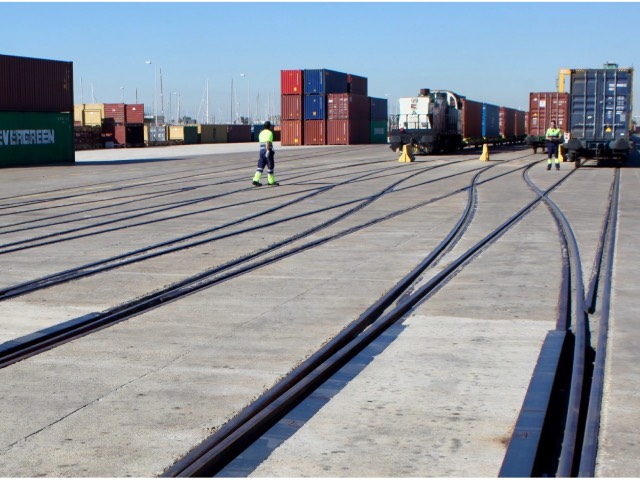Madrid has consolidated its position as the main point of origin of rail traffic, which accounts for almost 80% of the containers arriving at the Port of Valencia by train.
7% of the containers that have entered Valenciaport by rail come from Bilbao, 6% from Zaragoza and 4% from Valladolid.
Between January and June, 1 million tons and 103,250 containers have been moved by train.
The PAV is going to invest around 240 million Euro in the following years to improve accesses and railway infrastructures.
The synergy between maritime and rail traffic is a present and future commitment for the Port Authority of Valencia (PAV) with the aim of improving the logistics chain for all agents operating in the port community, and contribute to the common goal of decarbonisation. During the first six months of the year, the Port of València has been the destination of 2,000 trains, which have entered or left its docks to optimise logistics activity and provide a better service to customers based on economic and environmental efficiency.
Specifically, in this first half of the year, 992,916 tonnes of goods arrived by rail with origin/departure from/to Valenciaport. Of these, 78 percent came from Madrid, 8 percent from Zaragoza, 6 percent from Bilbao, 3 percent from Valladolid, and the rest, 4 percent from other destinations. In turn, 82% of the rail traffic leaving the Port of Valencia arrived in Madrid, 7% in Bilbao, 4% in Valladolid, 3% in Zaragoza and the rest in other places.
By percentage of containers that entered the Port of Valencia by rail, 79% corresponded to Madrid, 7% to Bilbao, 6% to Zaragoza, and 4% to Valladolid. Meanwhile, 77% of the containerised goods that left Valencia went to Madrid, 7% to Bilbao, 6% to Zaragoza, 3% to Valladolid and the rest, 5%, to other peninsular points.

The PAV has its own unit to manage rail traffic inside the Port of València, where 10 different companies already operate and compete, and has an investment plan of close to 240 million euros to continue promoting intermodality and reach the largest number of markets. To achieve this, it is necessary to have good connections both externally and internally, hence the commitment being made to the train.
Commitment to intermodality
The PAV’s objective for the coming years is to continue to increase the use of the train in freight traffic arriving and departing from Valenciaport, hence the importance of undertaking the necessary actions to adapt rail accessibility. Thus, the PAV is making investments to take advantage of the synergy between maritime and rail transport in order to promote competitiveness and contribute to the reduction of CO2 emissions.
Specifically, for the coming years, investments of around 240 million euros are planned to promote accessibility and improve Valenciaport’s rail network. These actions are aimed at the remodelling of the railway network in the Port of Valencia, the electrification of tracks, the adaptation of the network to the European gauge, the railway access to the Port of Sagunto or the improvement of the Valencia-Teruel-Zaragoza line, among others.
Thus, for example, the PAV is committed to key infrastructures such as the Cantabrian-Mediterranean Corridor, which is fundamental to favour the work of exporting companies in Aragon, but also to bring the markets of Navarre, La Rioja and the Basque Country closer to the Port of Valencia. The PAV is also working, together with ADIF, to promote the first rail motorway linking the port area with Madrid.









































